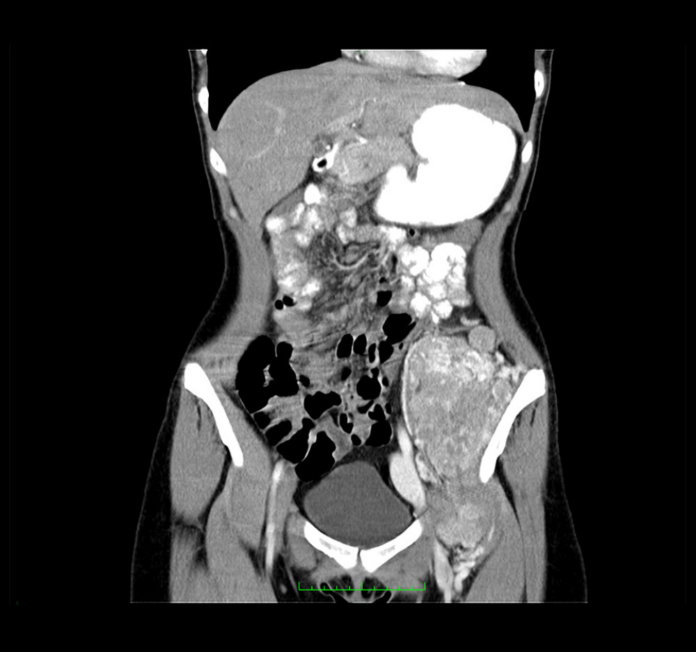9-year follow-up of retroperitoneal alveolar soft-part sarcoma
Alveolar soft-part sarcoma is a rare mesenchymal tumour in adults. It commonly affects young adults between the ages 15 and 35 years old. Studies indicate that treatment surgical resection with adjuvant therapy with tyrosine kinase has the most ideal prognosis. However, because of the rarity of disease, there is not much data to establish treatment guidelines. This article describes the case of a 24-year-old who initially presented with advanced (stage IV), huge, 21-cm alveolar retroperitoneal soft-part sarcoma. However, 9 years into observation the patient developed pulmonary, brain and bone metastases.
During the first year of his observation, there were no signs of complications
CT scans showed no signs of progression or recurrence of the primary tumour. In May 2013, the patient reported with paresis of the left lower extremity and atrophia of the left thigh adductor muscles. She also reported of high intensity headaches. Doctors advised a CT scan and a mass measuring 3.5×3.5×3.4 cm was found. In the following month the patient’s pelvis was removed and histopathology confirmed the diagnosis of alveolar soft-part sarcoma. During follow-ups over the next 2 years, doctors treated the patient with sunitinib. There were no signs of disease progression on chest CT and abdominal and pelvis MRI repeated every 3 months.
Doctors advised radiotherapy because of bothersome symptoms
This helped in achieving a complete resolution of symptoms. Further investigations showed that the disease was located in the left iliac bone and lungs. The patient was enrolled in a clinical trial with pazopanib 400 mg twice daily. After a change in the patients treatment regimen, there were no signs of disease progression for 5.5 years. However, in December 2020, follow-up tests revealed a progression of iliac bone metastases. The patient was asymptomatic at this point. Treatment was continued with pazopanib and radiotherapy.
The patient’s most recent radiotherapy was scheduled for March 2021.
Source: American Journal of Case Reports




